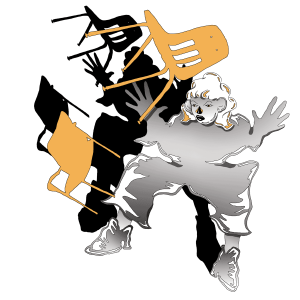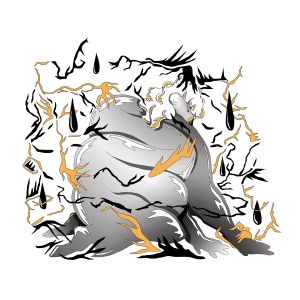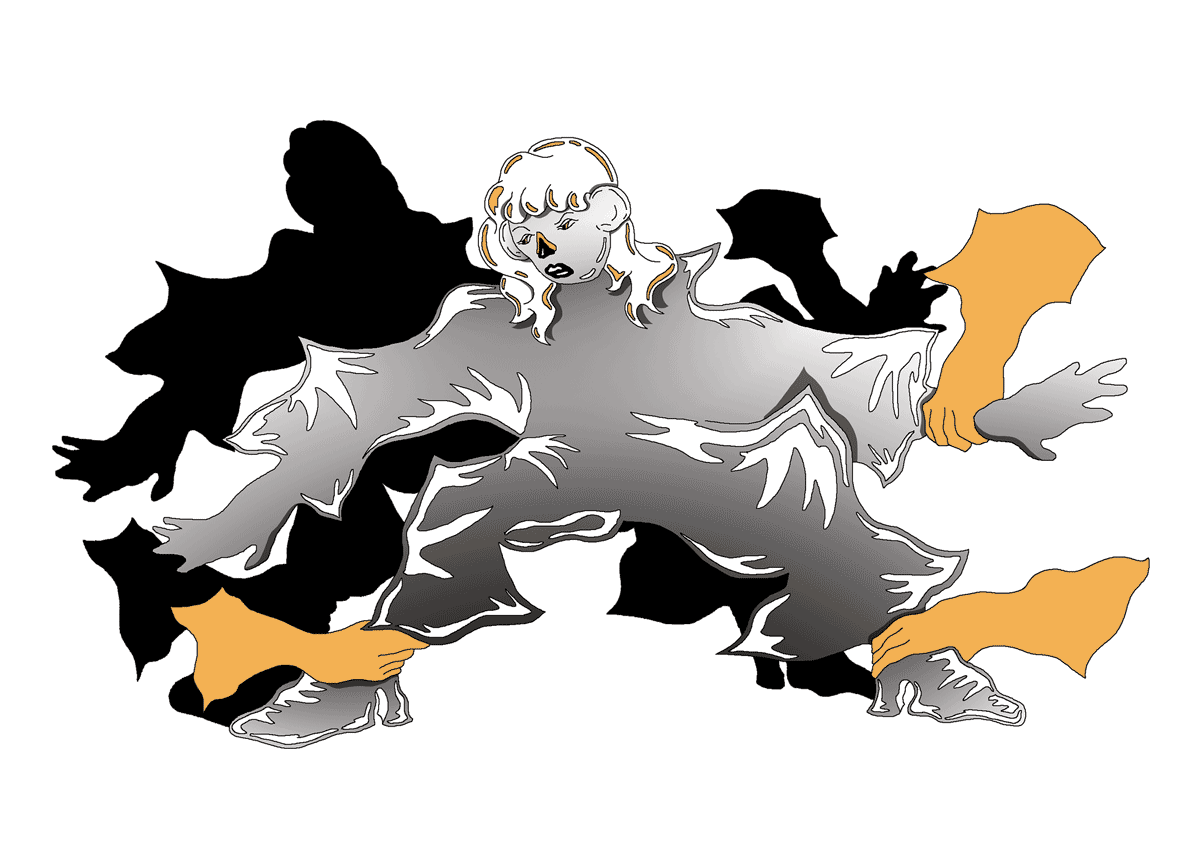I know I am going to faint. The fact announces itself with a shiver and a bead of sweat. Timber Timbre has just begun their first song. My dread feels out of place. The band smiles conspiratorially at each other; my friends beam in anticipation.
My vision is kaleidoscopic. The venue fragments into a blur of plaid, tattooed limbs, shaky hands clapping off-beat. The show unfolds around me, continuing, unaware that my illness is announcing itself in my body like a blade.
The exit is a faint glow across the room. The first song isn’t over yet. I search for a seat, frantic. The closest stool is occupied by a serene pregnant woman, her head nodding in time with the slow circles her finger draws on her belly.
I see the empty seat behind the lighting technician. Could I ask him for it? The exit, presumably leading backstage, catches my eye. Could I make a dash for it? Escape into the alley, a cab, my bed?
Before I have time to act, the first song ends and a seat opens up behind me against the wall. I feel relief, but don’t move for it. One song passes, then another.
I hesitate because of what sitting means — I fear it will publically mark my body as ill.
–
My parents love to tell certain stories about my body. Stories about its former strength. “She probably didn’t tell you she was a basketball star,” they’ll say to my friends, “she could have gone far.”
In these stories, I am in the middle of a game. My body is rooted to the gym floor and a small opponent runs into me. I am tall and unmoving. They bounce off of me and collapse, injured. These stories are interchangeable, true and violent. They are certificates of authenticity. They point to my body and say, she wasn’t always this way.

In the summer of 2015, I sat in a waiting room on the third floor of St. Paul’s Hospital. I was hoping to receive a diagnosis for my mystery illness.
There was a TV on the wall. It was showing footage of a street two blocks away, where a deer had run out of Stanley Park and become trapped in heavy traffic. Everyone in the room watched, silent. A group of cyclists surrounded the deer, herding it back towards the park. The women sitting next to me started clapping and laughing. The noise jolted me out of my seat.
I left the hospital one hour later with a diagnosis: Myalgic Encephalomyelitis (ME). It has no known cause, no treatment, and very little funding or research behind it. The primary symptoms are severe fatigue and brain fog, which come and go with no logic and are not made better by sleep. Many people with ME lose the ability to walk, work, and sometimes talk. In the last century, ME has been conflated with hysteria and dubbed the yuppie flu. Most doctors believe that we the afflicted have manifested the symptoms with our minds — that we simply need to correct our thinking to get well.
At the time, I could not process that this illness was my reality.
–
As a teenager I bussed into the city for concerts. I can chart each season through ticket stubs, set lists and homemade band tees.
My body was my greatest ally on these adventures into the city. I would feed it Starbucks and cheap pizza and in return, it would activate with such enthusiasm, hurtling around the city in search of whatever band I was seeing that night. I would stand in line for hours only to plant myself in the front row, where I would stand for hours more. The band would begin and I would lovingly crane my neck upwards, bliss bursting from my eyes and mouth and arms. That was my joy: the gift of my body.

In the time immediately following my diagnosis, I believed that if I performed wellness convincingly, my body would follow. For every three days spent socializing, I spent three days in bed. I rarely told people about my diagnosis. When you have an invisible illness, you can hide it until you can’t.
In 2015, I saw Angel Olsen at the Biltmore Cabaret. It was a packed, sweaty show. I stood behind the stage watching Angel croon through chain link. With nothing to lean on and nowhere to sit, I spent the set on the verge of fainting and left early. I staggered the three blocks home and collapsed.
–
The Timber Timbre show took place 3 years after my diagnosis. By then, I had stopped drinking and riding my bike. I had watched my social circle fold itself up into smaller and smaller pieces. Yet, the person I imagined myself to be could still stand, dance and experience live music as I had as a teenager.
Disability scholars use the term “biographical disruption” to explain the way a chronic illness can change the course of your life, critically challenging the future you imagines for yourself. (1) This disruption has been described by some as a death of self, especially when an illness is so unpredictable, overwhelming and controlling that you have little power over your own life. I did not want to have to change the way I lived my life; I did not want to stop participating in the activities that I saw as central to my identity.
After years of missed shows, I channeled everything into seeing Timber Timbre. I called the venue ahead of time to ask if there was seating. I read reviews to find out if they had air conditioning. I casually interrogated friends who knew the venue to find out if there was a water station. I was a disabled detective.
–
As Timber Timbre plays I stare at the seat. I have spent years using the invisible nature of ME as camouflage among the able-bodied. The bliss of performing wellness is intoxicating, causing me to forget myself until I come to like this: trapped and unmasked.
All the familiar fears of making my illness public take hold of me. If I sit down, the venue could be swallowed by silence and a single spotlight could wash over me. If I sit down, I could have to welcome a new public identity as a person with a disability.
Another song passes. Nausea and vertigo thread their way through my sinuses. I walk around the table and sit.
No one notices me. The show doesn’t stop. My friends eventually realize that I have moved, and smile at me. I lean against the wall. Fatigue drains from my fingertips and pools around my feet on the floor. For the first time that evening, I am able to pay attention to the music. I feel good.
X
Tash King is a writer and media educator who has spent the last two years facilitating media literacy workshops at The Cinematheque. She lives, works and plays on the traditional and unceded territory of the Musqueam, Skxwú7mesh and Tsleil-Waututh peoples.


